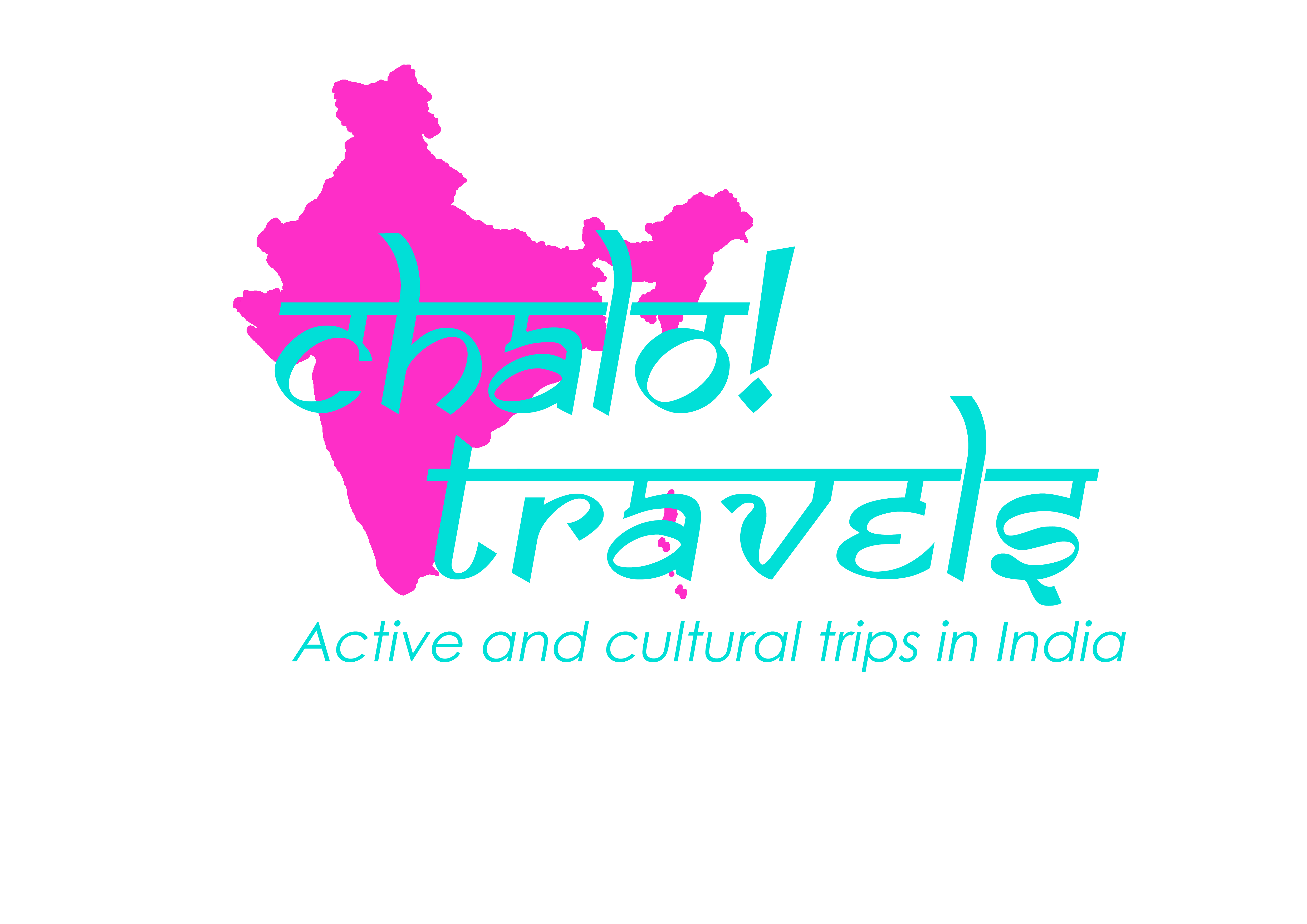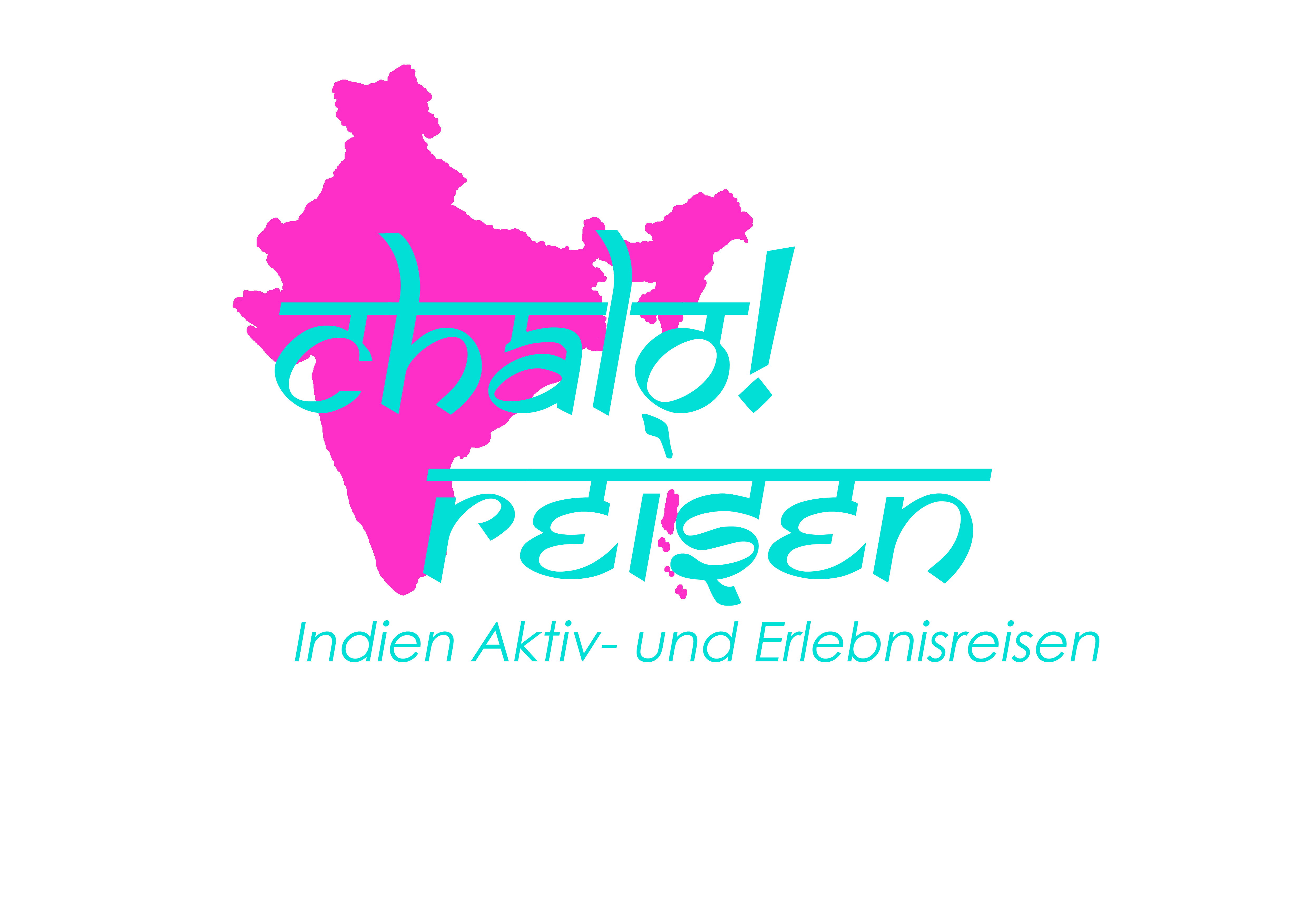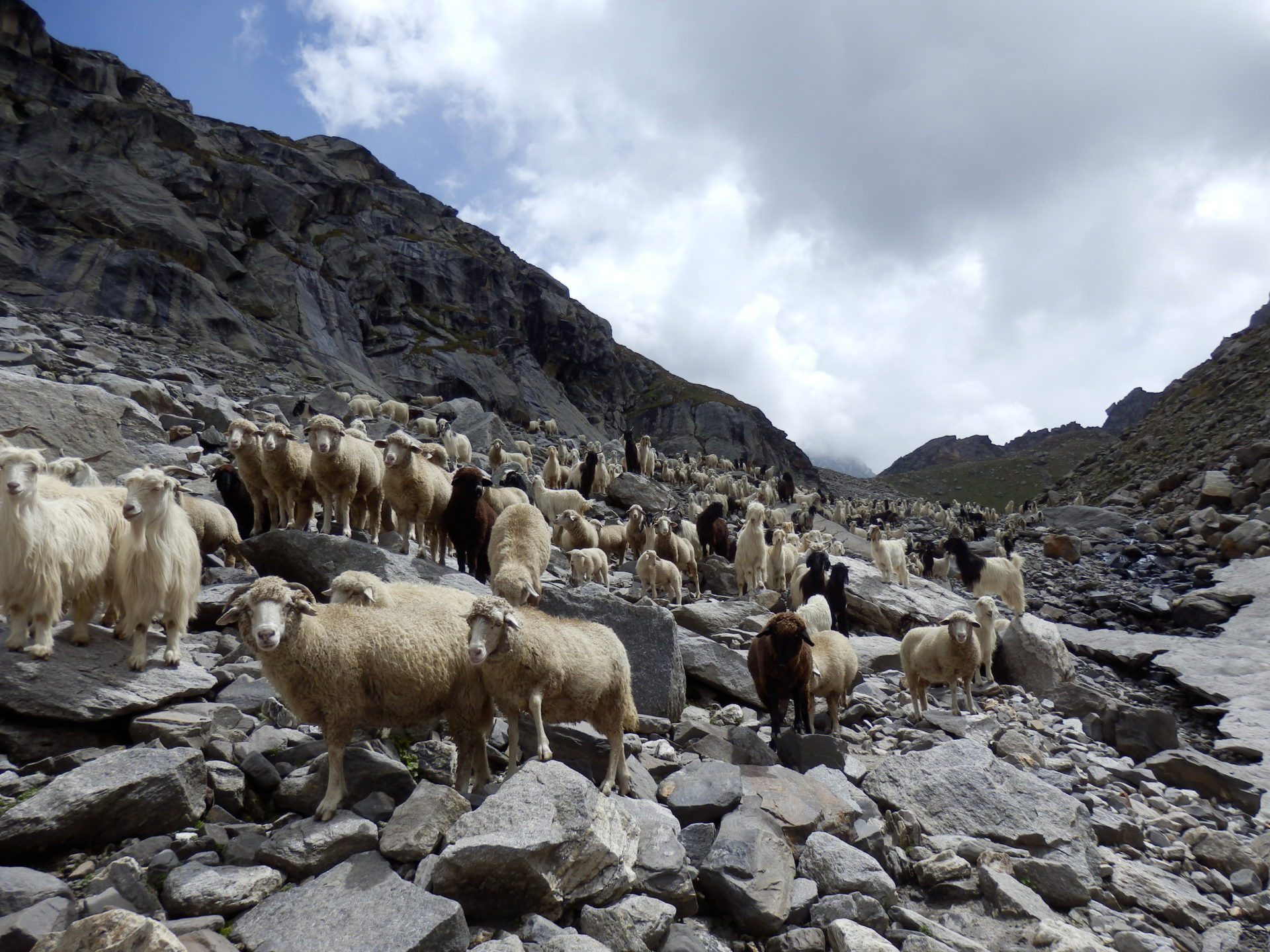- Sport & Abenteuer Reisen
- Reise Bausteine
- Trekking Reisen
Overview
The Hamta Pass Trek is probably one of the most beautiful treks in this area! It offers everything: beautiful campsites with great views, river crossings, a pass (4270 m), views of the 6000 m high mountains Deo Tibba and Indrasan and the chance to spot wild animals such as vultures, snow leopards and bears. The most impressive thing about this moderate trek is probably the Hamta Pass itself, the easternmost pass leads over the Pir Panjal chain, which separates the green Kullu valley from the dry high mountain desert of Lahaul and Spiti. The Trek is the shortest line between the Beas and Chandra rivers and served as a trade route from China to India for a long time before the road over the Rothang Pass was completed. This trek is also possible during the monsoon season, when all flowers are in their prime.
Program
Day 1 Drive from Manali to Prini (1900 m), 3 km from Manali
Prini to Sarotu (3100m) 6 Hours Trek
First we go through the tranquil village of Prini. Passing traditional houses on a small path, we walk higher until we come across a winding road that leads up to a dam. We always walk between the curves of the road on small paths until we come to a mountain hut. Here we can rest and have a tea. It continues uphill through the last village in the Hamtatal. Now we have to follow a small road to the dam for a while. Then we cross a bridge and through the forest to our first camp. (Overnight in a tent) B/L/D
Day 2 Sarotu to Balu-Ka-Ghera (3770 m) 5 hours
We always walk along a river on a flat track, where we also have to cross a few times over shaky bridges. Then it goes up relatively steep and we have the adventurous challenge to cross another river, this time without a bridge! We have our camp near a small lake. (Overnight in a tent) B/L/D
Day 3 Balu Ka Ghera to Shia Gauru (via Hamta Pass) (4268 m) 6 hours
Today we cross the famous Hamta Pass. Over rocks it goes higher and higher and the air becomes noticeably thin. Arriving at the top, we are surrounded by glaciers and snow-capped peaks. We descend into a side valley of the Lahaul valley. (Overnight in a tent) B/L/D
Day 4 Shia Gauru to Chatru (3560 m) 4 hours
Today we have an easy day. We descend comfortably to Chatru, a resting place with a few small dhabas (small Indian inns) next to the raging Chandra river. From here we take the jeep back to Manali. To do this, we have to cross the 3980 m high Rothangpass (5 hours). B/L/-
Services
- Trained trekking guide
- Cook and helper
- Load horses or carrier
- For 3 nights accommodation in 2-man tents
- Kitchen, toilet and dining tent
- 4 days full board (3 x breakfast, 4 x lunch packages, 3 x dinner and 3 x snacks)
- Transport from Manali to the start of the trek
- Transport from the end of the trek to Manali
Highlights

kitchen tent 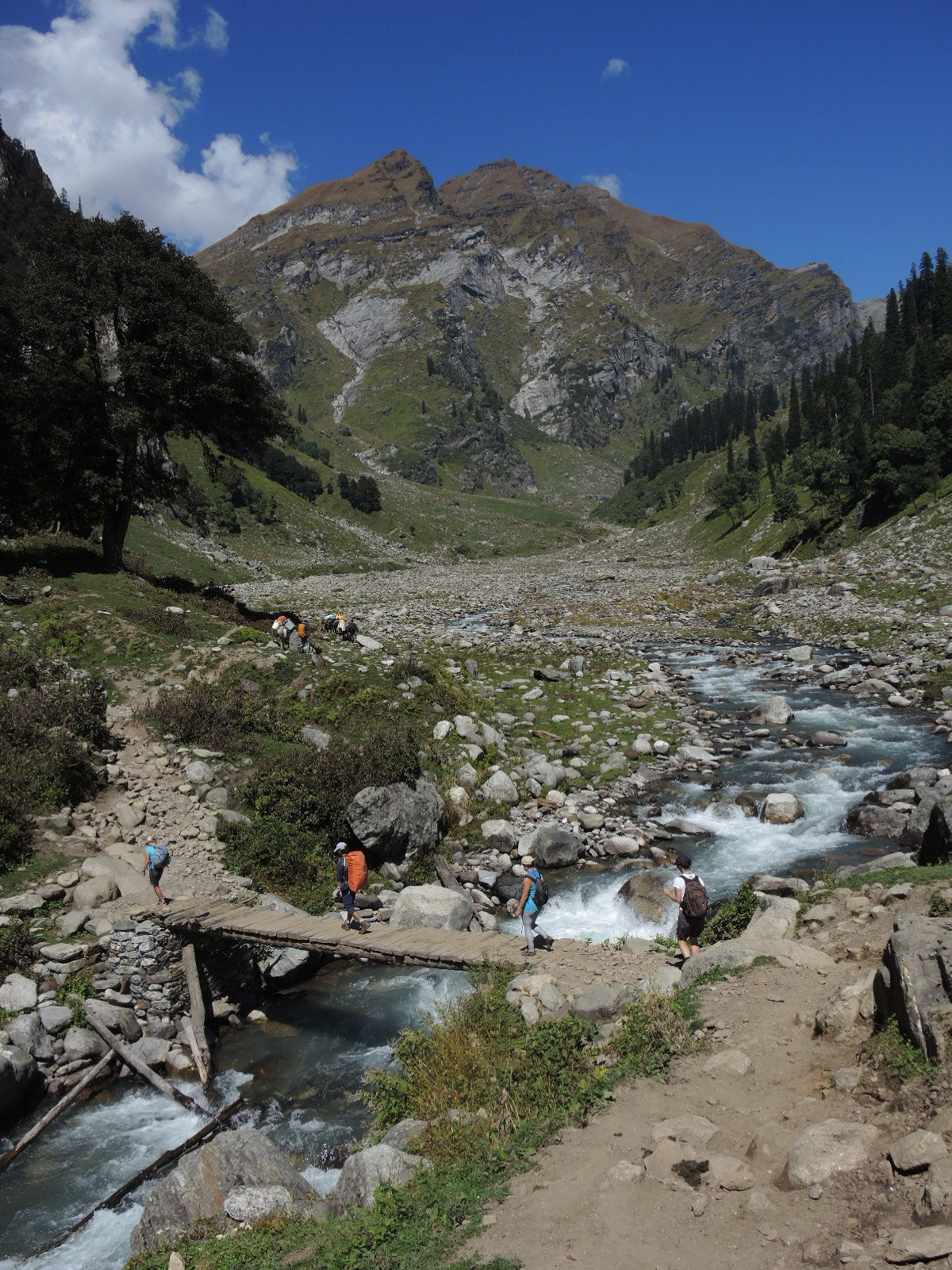
Hamta Pass Trek 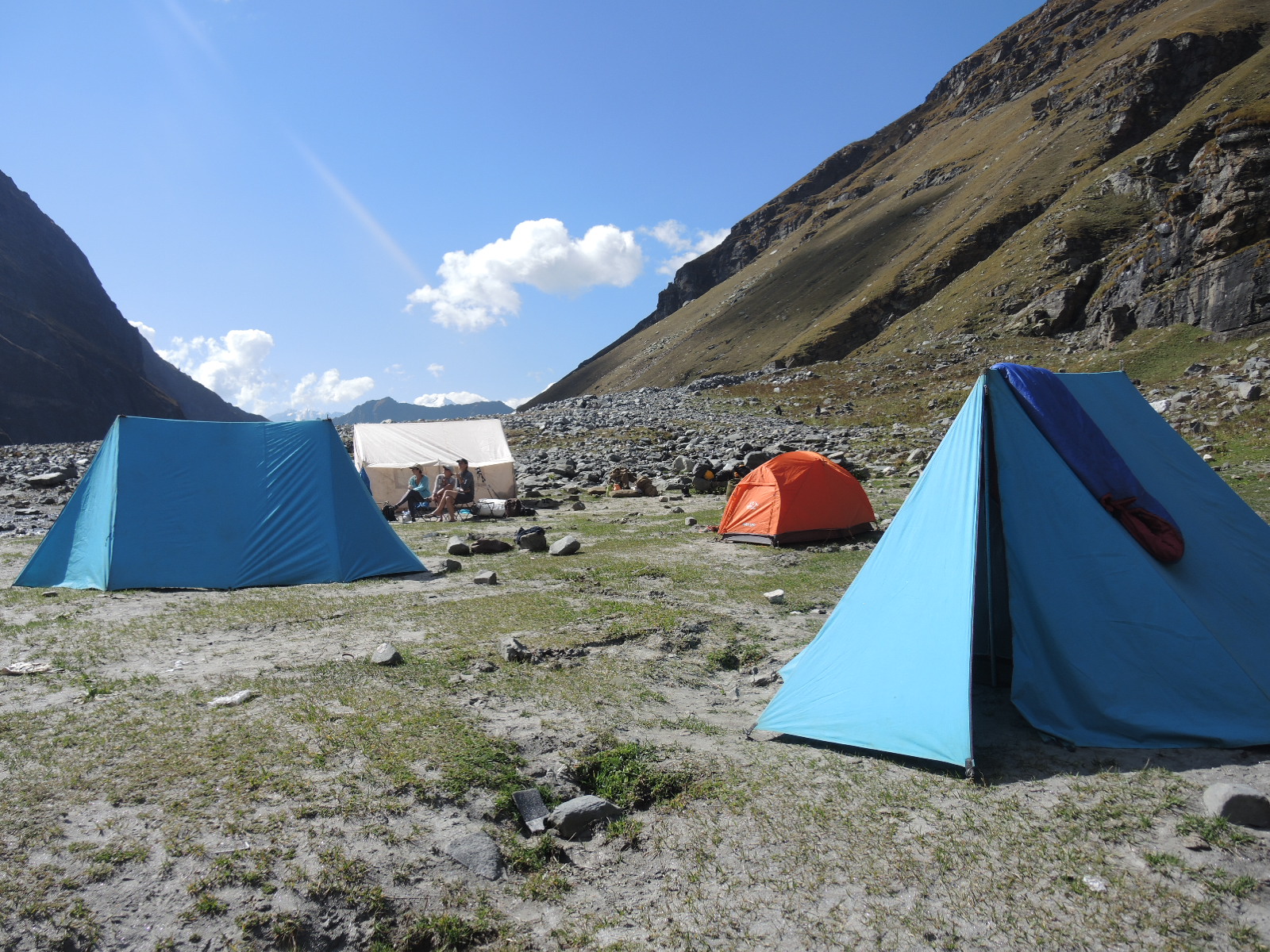
Camp 
Hamta Pass Trek 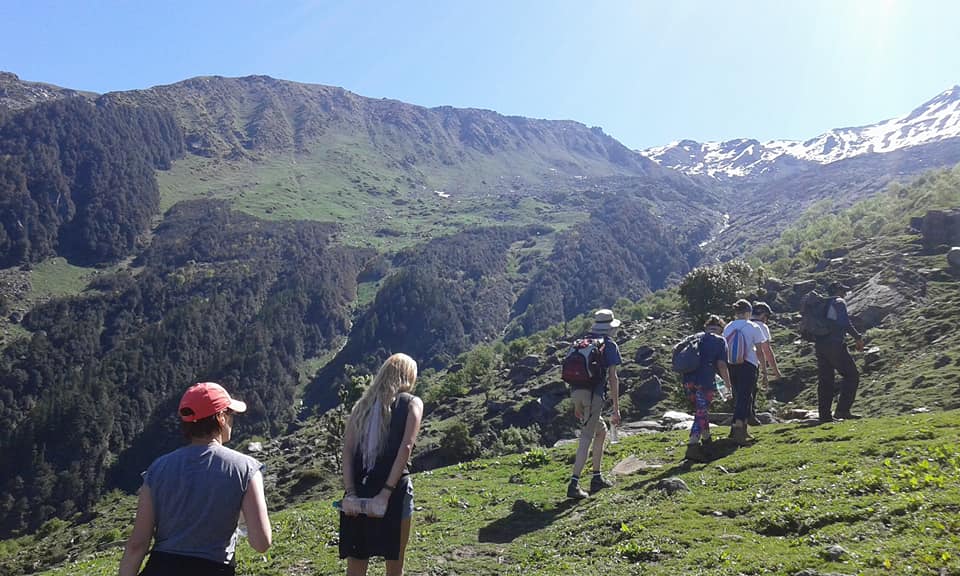
Hamta Pass Trek 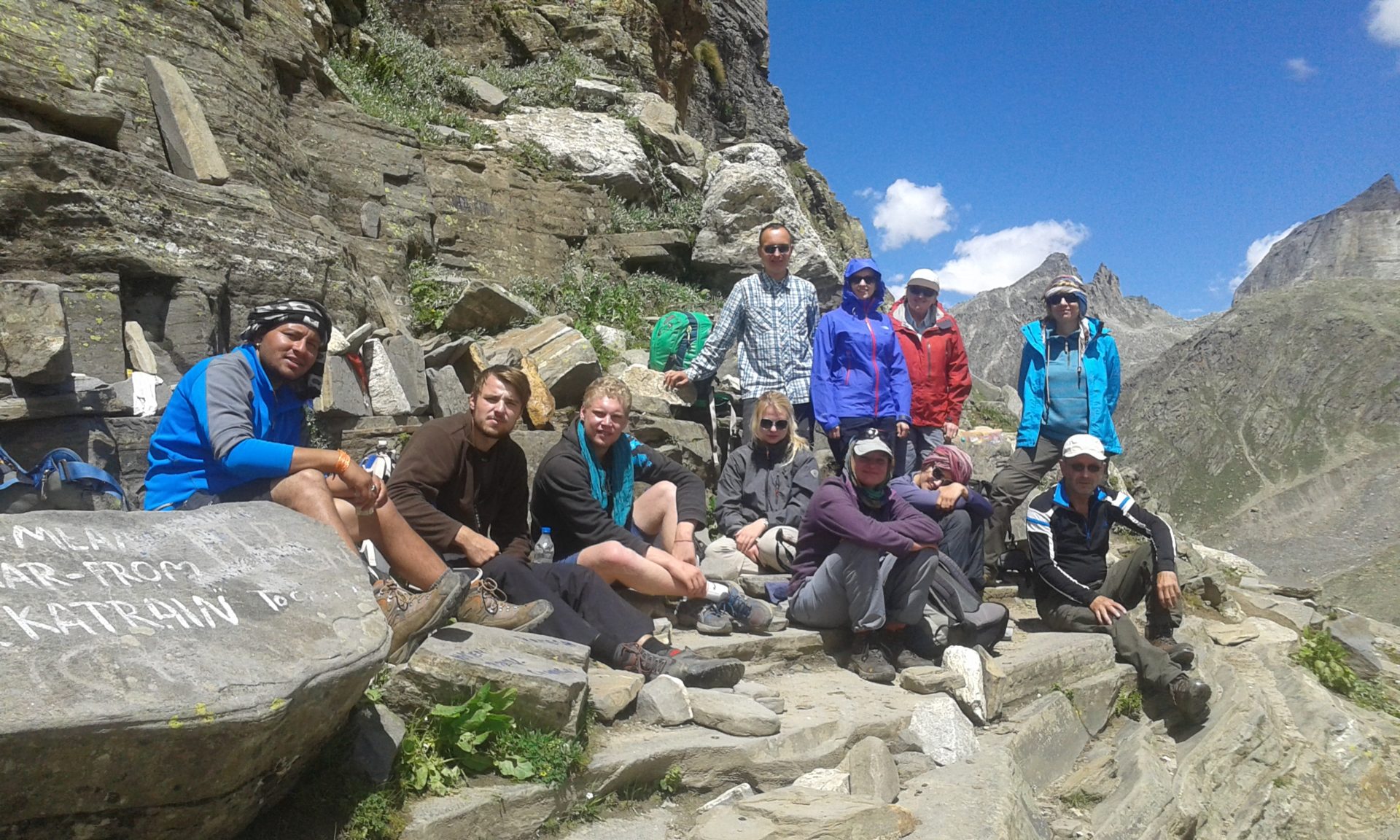
Hamta Pass 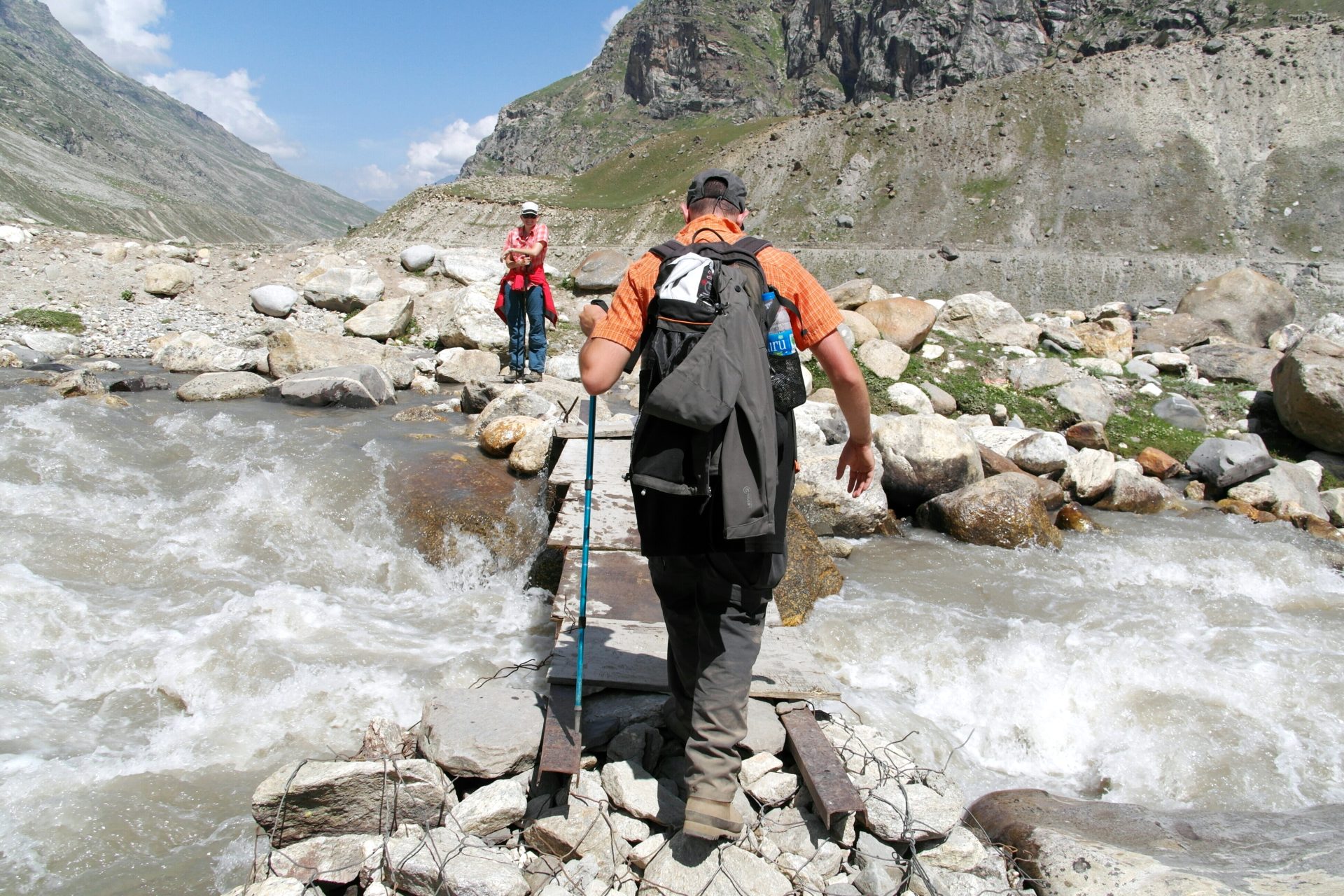
Hamta Pass 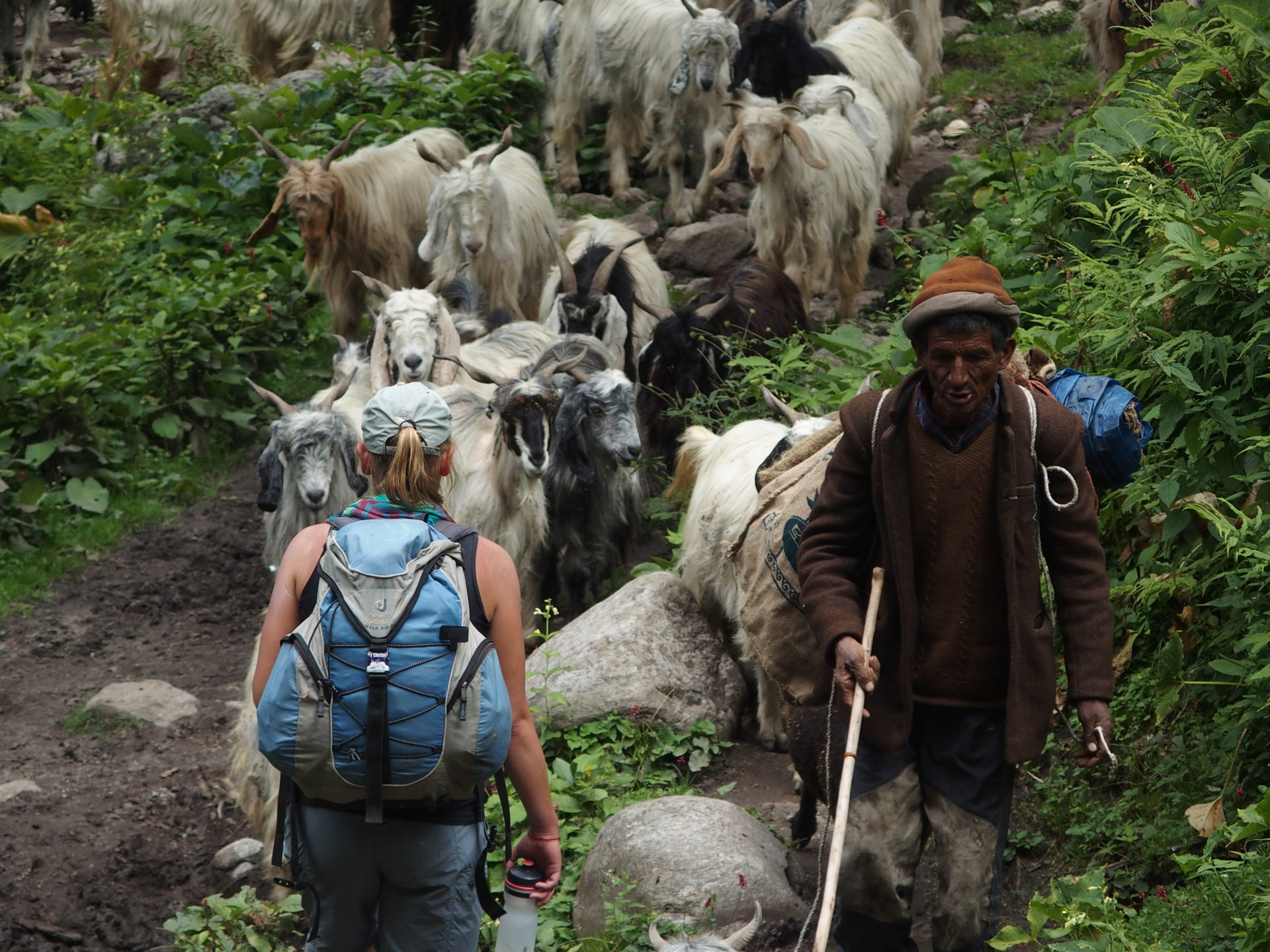
Hamta Pass 
Hamta Pass 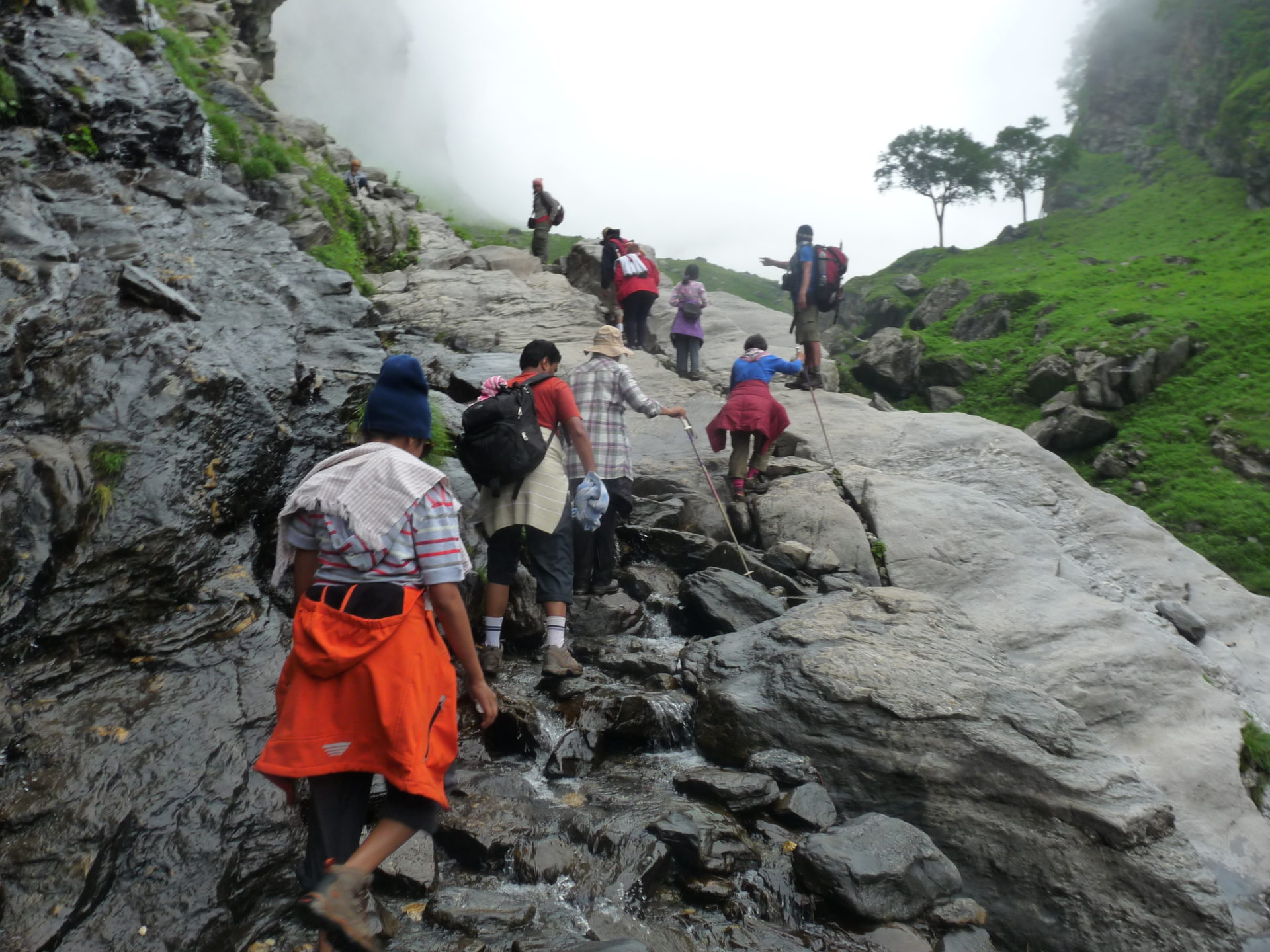
Hamta Pass 
Hamta Pass Trek 
Hamta Pass Trek 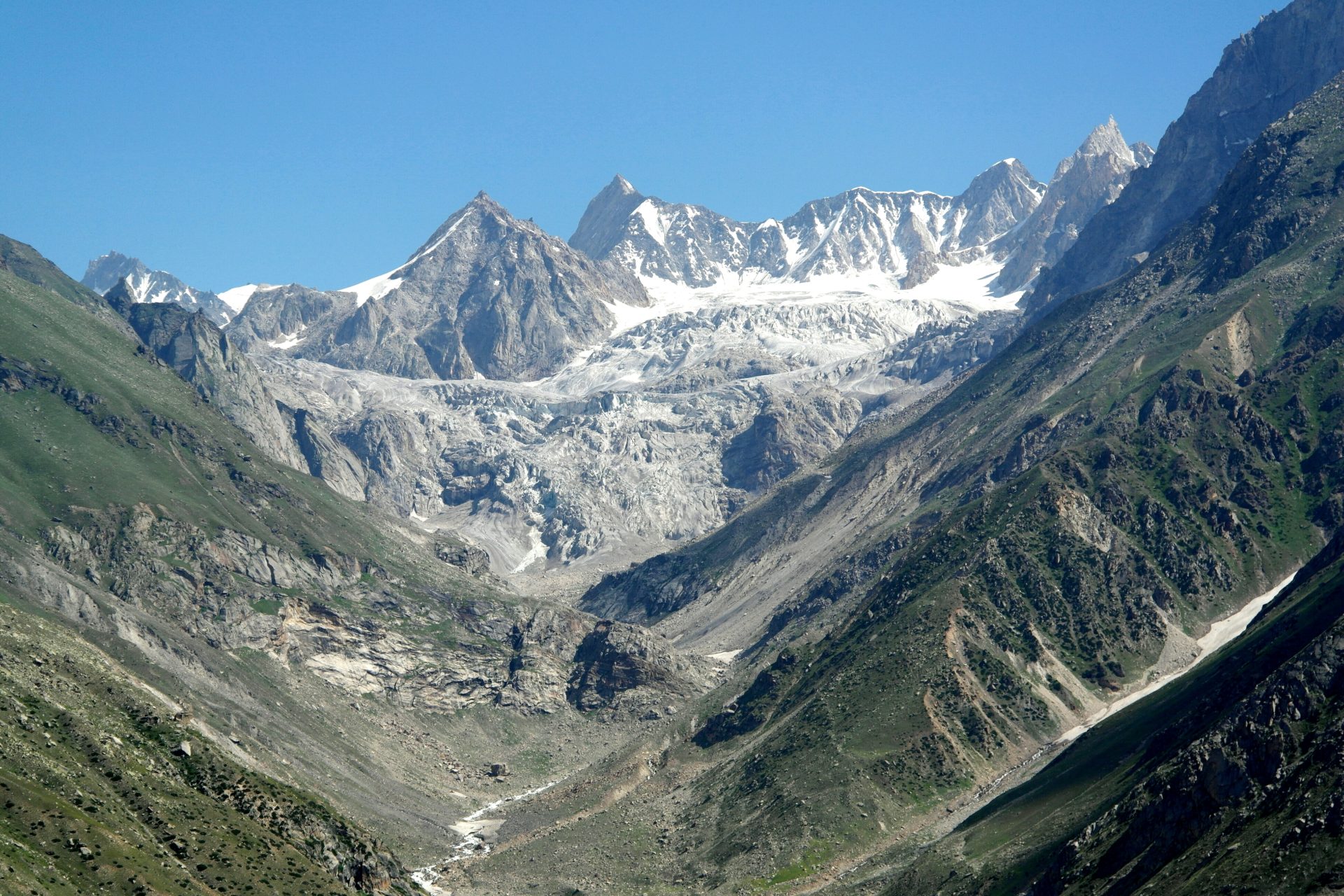
Hamta Pass Trek 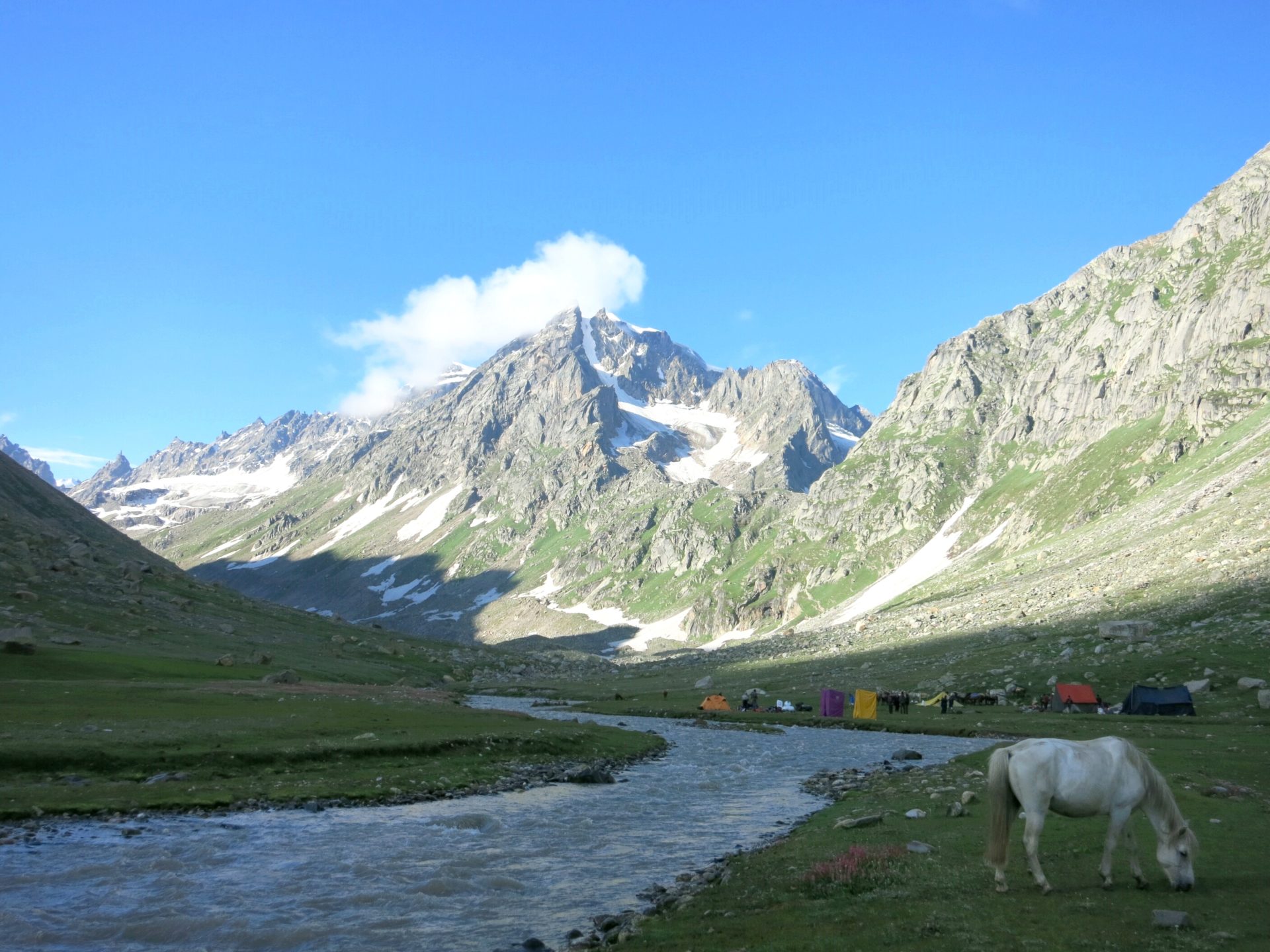
Hamta Pass Trek 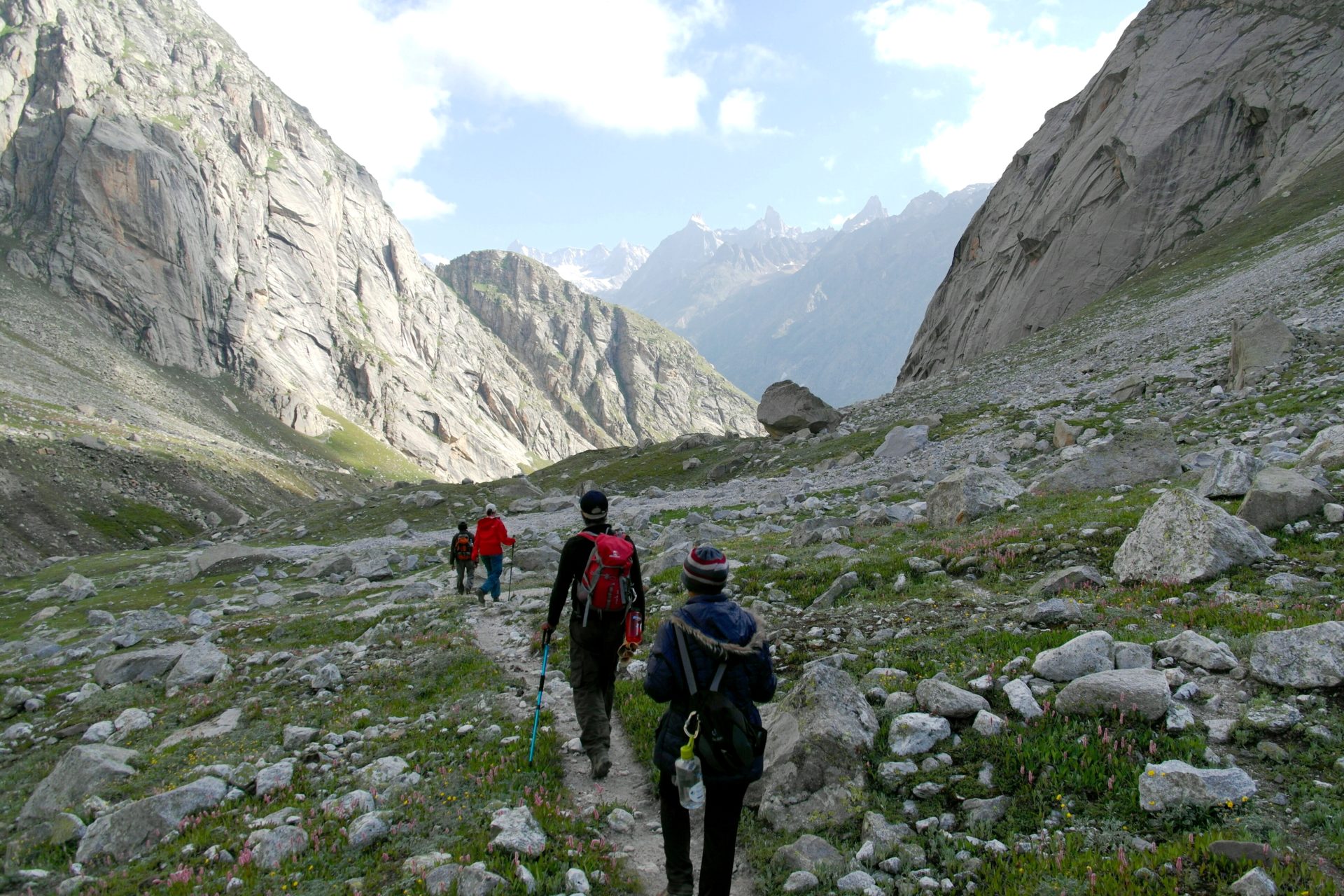
Hamta Pass Trek 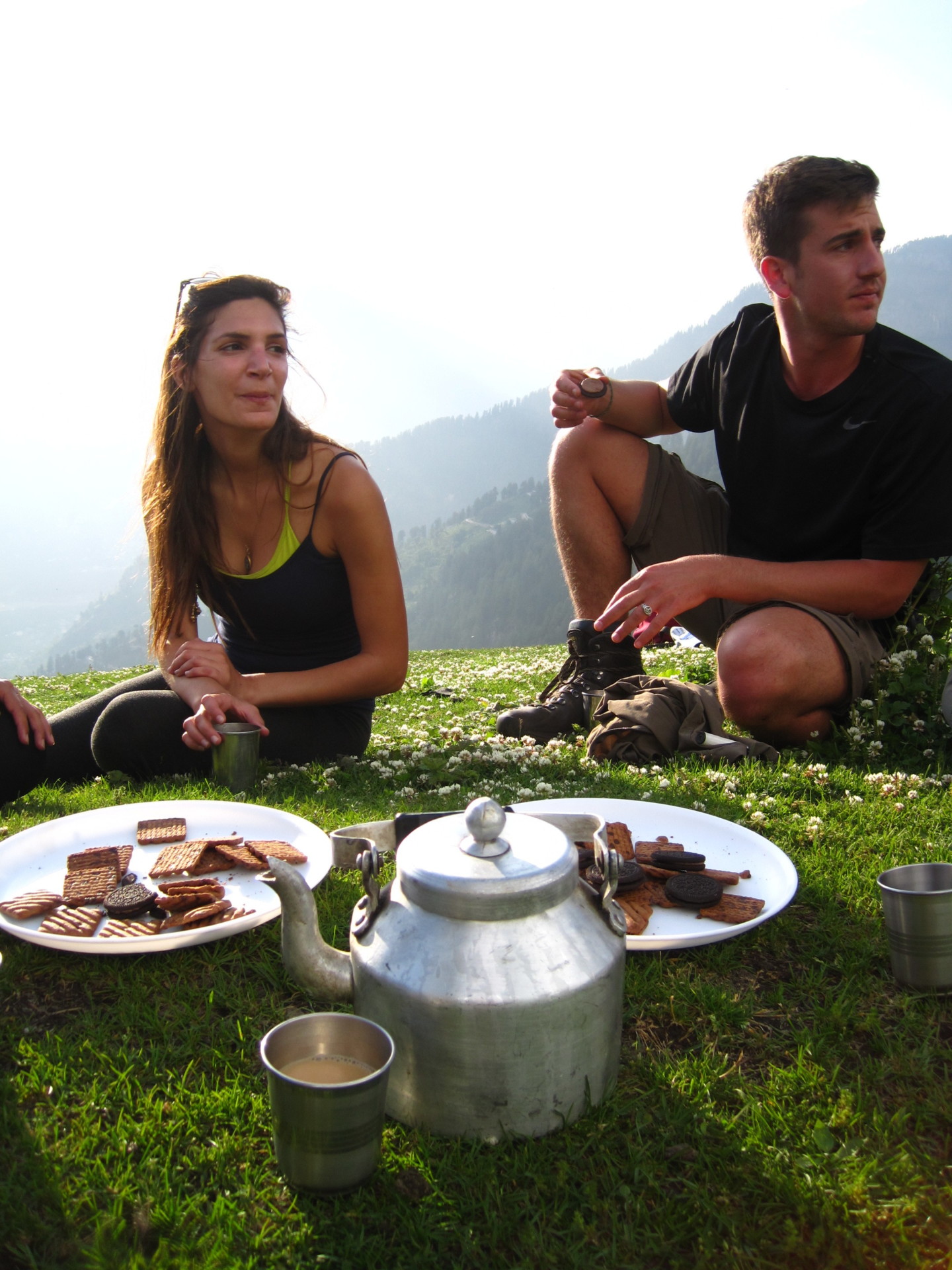
Tea Break
Prices and Dates
This trek is possible from mid-June to mid-October.
Price per Person 350 € (2 Participants). Price decreases with higher amount of participants
Tour Info
Requirements
This trek is a typical light to medium-heavy trek in the Himalayas. The daily stages are never very long and range from 4 to 6 hours. It goes steadily uphill towards Hamta Pass and you can feel the decreasing air pressure near the pass a little bit. From the pass it goes down relatively steeply.
Information about the Trekking Tours with Chalo! Travels
Mountain guide and trekking team
On all our treks we have at least one (for larger groups of 6 participants two) trained local mountain guide. Our mountain guides have all completed at least the Indian mountaineering training, many of them have also completed the advanced courses.
They are familiar with the trekking routes and know the terrain excellently. All our mountain guides speak English.
In addition, there is a local team consisting of a cook (if the group consists of only two participants, the mountain guide also takes over the tasks of the cook), helpers, horsemen with horses or Nepalese porters, depending on the type of trek.
All our team members have been working with us for years, are very friendly and always strive to provide our guests with a great trekking experience. Their English (besides of the Guide) is rather mediocre or non-existent, but this is not necessarily a hindrance to communicating with them.
Trekking Routes
The trekking routes are designed according the skills of our guests and are all feasible for a person with a good fitness level, unless otherwise mentioned. The daily routes are between five and eight hours long (with breaks) and an average increase of around 500-800 metres of altitude is completed.
In between, rivers may have to be crossed. The paths are partly well developed, but sometimes also almost non-existent. On our trekking routes there are hardly any villages in between, so we will take enough food for the whole tour.
On our treks we cross passes, snow or glaciers. On steep slopes, we have safety equipment with us.
Daily routine (Depending on the length and intensity of the trek, the times may vary)
7: 00 am Get up with Tea
7:30-8:30 am Breakfast
7:00-9:30 am Dismantling of the camp
8:00- 9:30 am Start Trek
1:00 pm Lunch on the way
3:00-5:00 pm Arrival at the camp and camp construction
3:30-5:30 pm Snacks
7:00 pm Dinner
Altitude and altitude sickness
Altitude sickness is a very important topic that should not be underestimated, especially during our trekking tours in the Indian Himalayas. At altitudes above 3500 m, our body has to slowly get used to the low air pressure, which also causes less oxygen to enter our lungs. The first signs of altitude sickness are headaches, which are accompanied by dizziness, nausea, insomnia and loss of appetite. It becomes problematic when water accumulates in the lungs and brain and edema occurs. Then only the immediate descent to lower altitudes will help. To prepare for the heights on our treks, we will either spend a few nights at high altitudes before the trek or slowly ascend during the trek to acclimatize. If we notice that there are problems with our guests (each person is otherwise able to acclimatize, regardless of age, gender and fitness level), it may happen that either the entire group or the concerned participant descends/returns with a team. In addition, it makes sense to take an emergency drug for altitude sickness. For this, it is best to consult the pharmacy or the travel doctor. For certain treks we will also have oxygen with us.
Luggage
Each trekking participant is responsible for his own clothes and personal belongings. Depending on the trek, we are either with horses or porters. If we have load horses, one bag per participant can be loaded onto the horse. In the case of treks with porters, all personal luggage must be carried independently. Tents, sleeping bags, mattresses and food are carried by our porters.
For trekking tours with horses, a day backpack with space for the lunchbox, a water bottle and warm overcoat clothing should be taken with you. Here to the complete packing list for our trekking tours.
Packing list for trekking tours
- sleeping bag at least -10°C
- large backpack or soft carrying bag so that the load animals can carry the luggage
- Small carrying backpack for the day approx. 30-40 l with rain protection
- flashlight/headlamp
- 2 refillable water bottles
- hiking poles
- passport and passport copy
- camera with spare battery and memory card
- headgear as sun protection
- Good Sunglasses
- cap
- Scarf, Buff
- Gloves
- wind-proof trekking pants
- trekking pants
- Functional Underwear Long
- hiking boots
- socks thick and thin
- sneakers, sandals and/or slats
- windbreaker
- Warm Jacket
- fleece sweater/jacket
- Tshirts
- sunscreen, lip balm min. Protection 40
- fat cream
- water purification tablets (boiled and filtered water is provided)
- own medications for headaches, nausea, digestive problems, colds)
- bubble patches and dressing material
- own hygiene articles
- Toilets Paper
- hand disinfection
Meals
During the trek there will be a vegetarian full catering. Water is either boiled or we have a water filter with us.
Breakfast (daily selection):
- Coffee/Tea
- Oatmeal porridge/muesli/cornflakes/Indian porridge
- Indian breakfast
- Sliced fruit/vegetables
Lunch (mostly lunchbox), sometimes warm in the camp
- Sandwiches/Indian (rice, chapati, vegetables)/potatoes
- Juices
- Chocolate
- Fruit
Snacks
- Tea/coffee
- Cookies
- French fries/Indian snacks
Soup
Dinner (depending on the length of the Trek mix of Indian/Chinese/Continental)
- Vegetable dish
- Lentil dish
- Rice/noodles
- Chapati
- Salad
- Dessert
Accommodation and camp
We have very comfortable and spacious two-man tents. Our mattresses are practical but simple if there are problems with sleeping on hard surfaces, please take your own mattress with you or order from us. Our sleeping bags are freshly washed and have a very good quality with comfort zone up to -5°C/extreme zone up to -20° C. It is recommended to bring personal indoor sleeping bags.
In addition, we have a spacious dining tent with tables and chairs, a kitchen tent for the team and a toilet tent. For treks up to 4 people, the kitchen tent can also act as a dining tent at the same time.
For trekking tours with porters, we will take our smaller, lighter tents with us and do without a toilet tent.
Weather
In the Himalayas, temperatures fluctuate widely. While it can get warm up to 25°C during the day and the sun is not only warming, but also very intense (sun protection is a must), it can also cool down significantly below the minus-grade at night, especially in the months end of September and October, as well as in June. There may also be weather changes with snow on the passes.
-
5
Himalaya Trekking in India
Hello dear Sarah Yes, everyday life has us back again but the great impressions remain. The trek was a lot of fun and we met great people. We would be happy if we keep in touch Thank you for everything, you are a great team Greetings to all Matthias and Jannik
